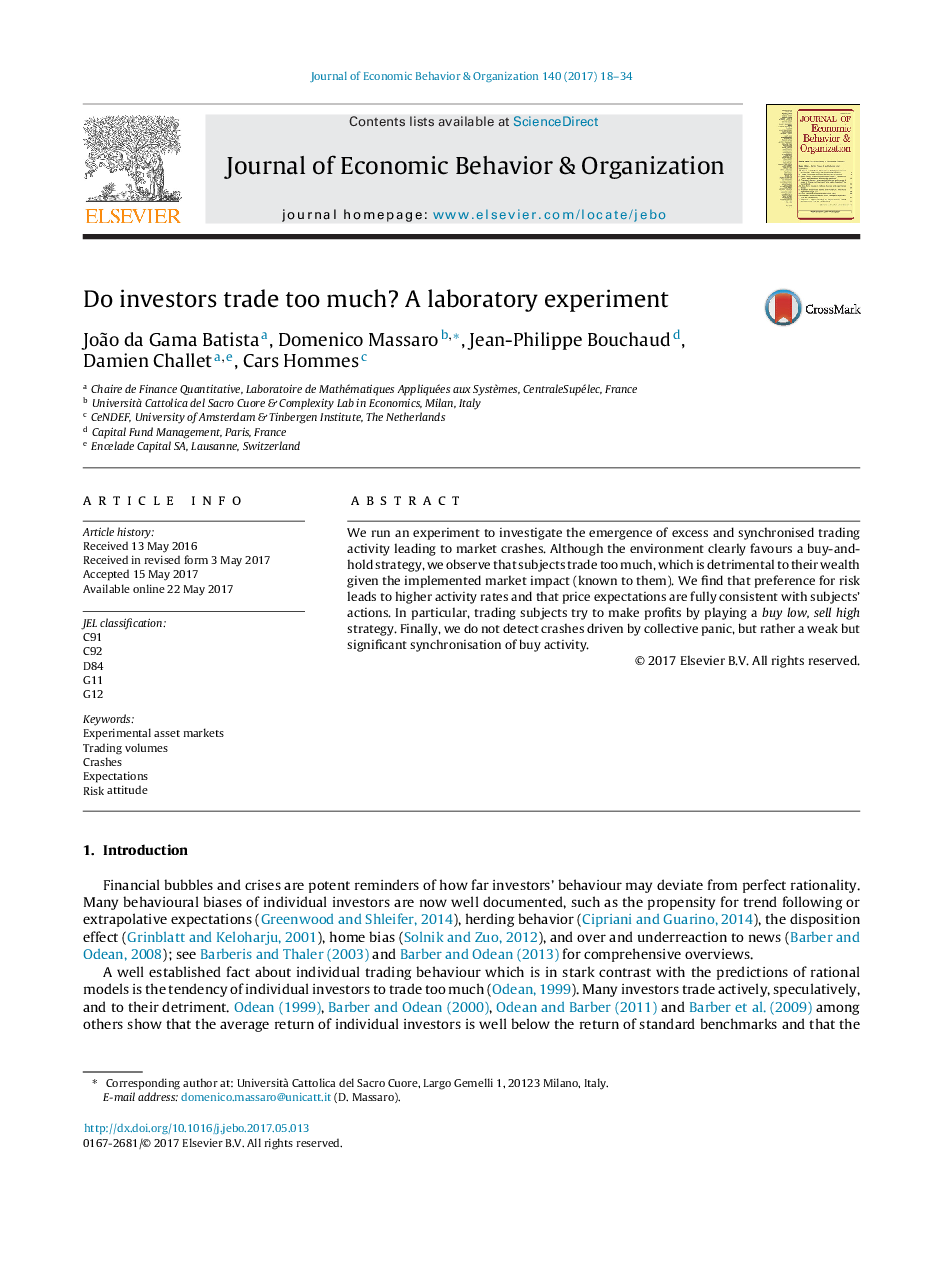| Article ID | Journal | Published Year | Pages | File Type |
|---|---|---|---|---|
| 5034429 | Journal of Economic Behavior & Organization | 2017 | 17 Pages |
â¢We investigate the emergence of excess trading in experimental asset markets.â¢We observe that subjects trade too much and this is detrimental to their wealth.â¢We find that preference for risk systematically leads to higher activity rates.â¢Traders try to make profits by following a buy low, sell high strategy.â¢We do not detect big market crashes, but a weaker market activity synchronisation.
We run an experiment to investigate the emergence of excess and synchronised trading activity leading to market crashes. Although the environment clearly favours a buy-and-hold strategy, we observe that subjects trade too much, which is detrimental to their wealth given the implemented market impact (known to them). We find that preference for risk leads to higher activity rates and that price expectations are fully consistent with subjects' actions. In particular, trading subjects try to make profits by playing a buy low, sell high strategy. Finally, we do not detect crashes driven by collective panic, but rather a weak but significant synchronisation of buy activity.
